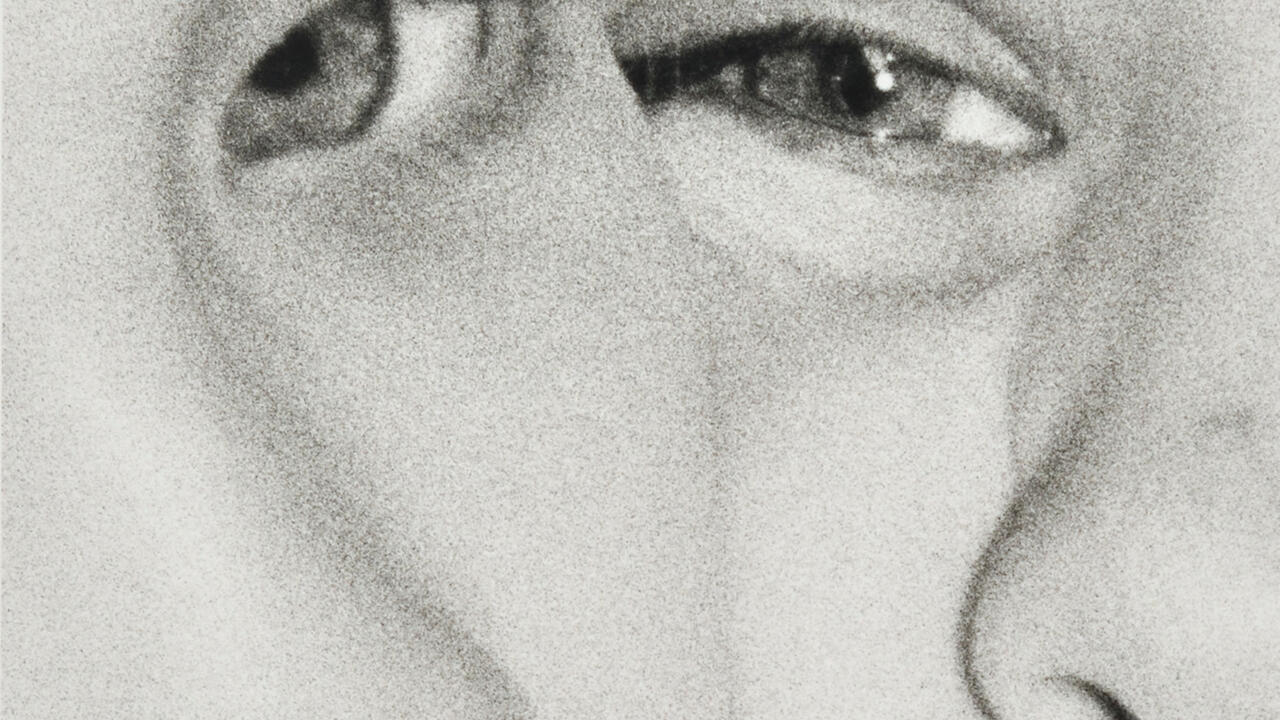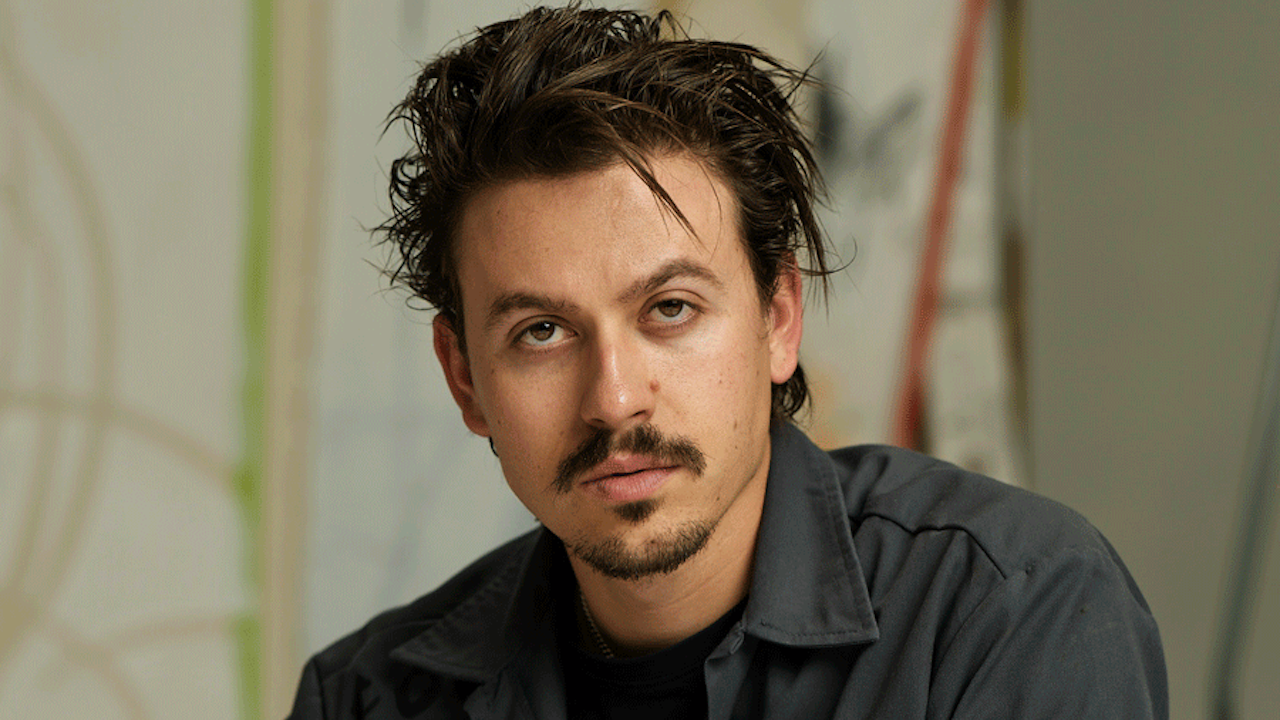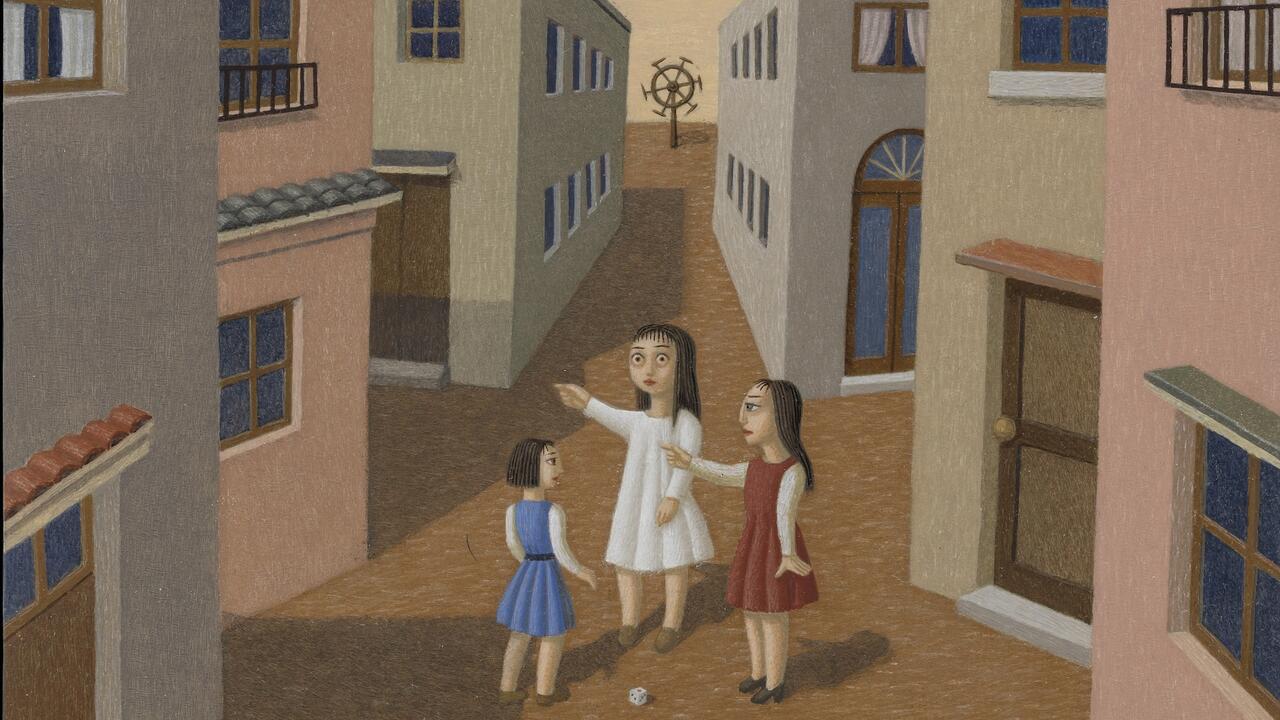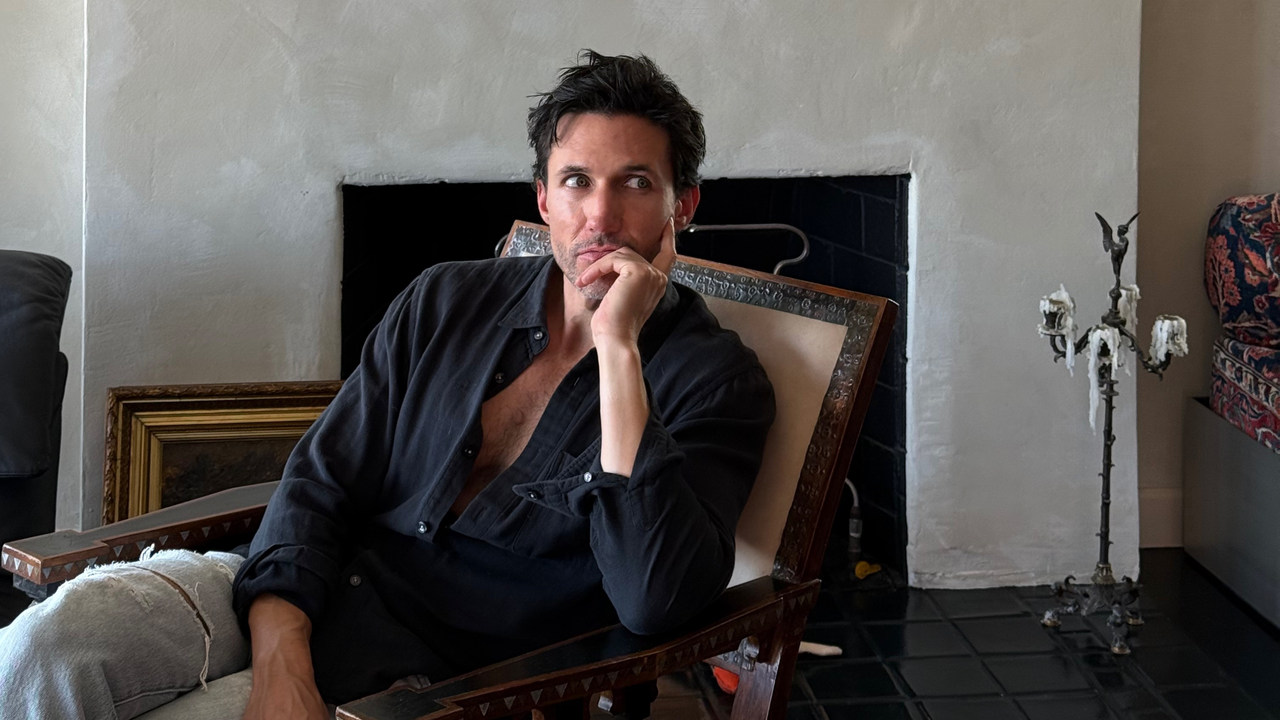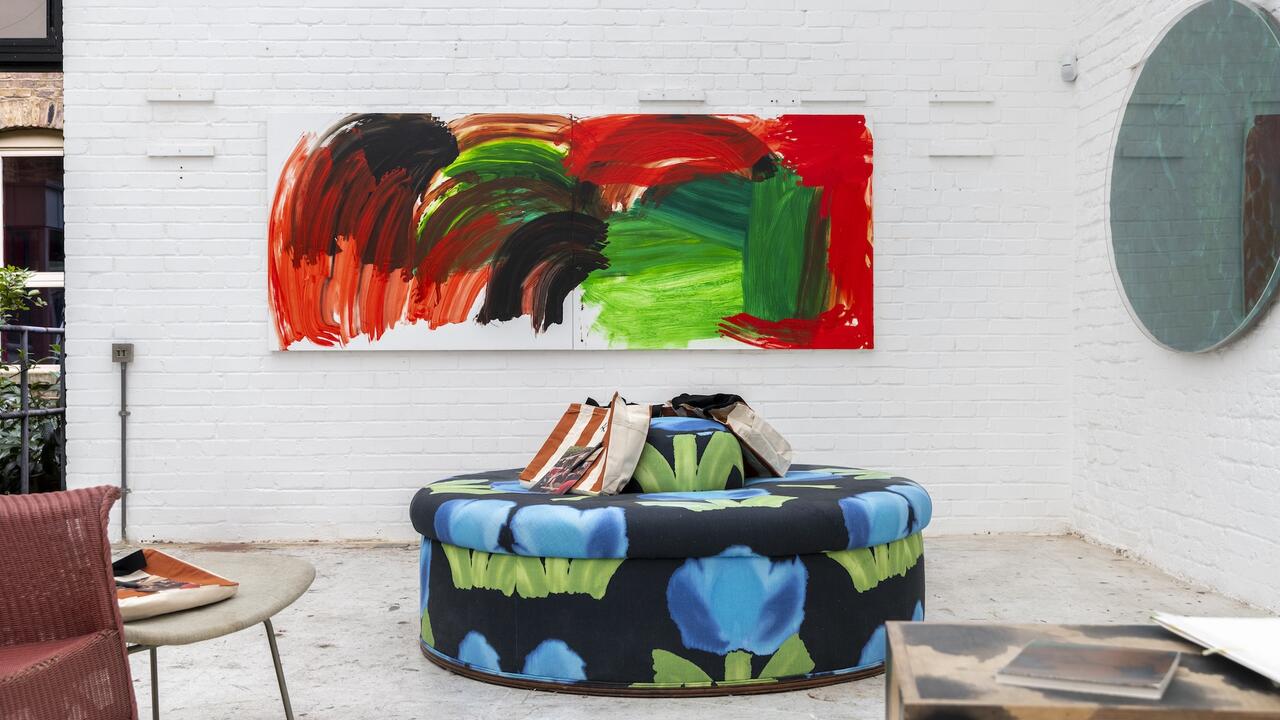An Archive of Inspiration
At Frieze Masters, a special glimpse into Sir Peter Blake's studio - and a chance to hear from the artist himself
At Frieze Masters, a special glimpse into Sir Peter Blake's studio - and a chance to hear from the artist himself

An original installation on the stand of Waddington Custot at Frieze Masters this year offers an intimate insight into the working space - and process - of Sir Peter Blake, who also addresses Frieze Masters Talks. Robin Brown, the acclaimed designer who worked closely with Waddington Custot on the project, spoke to Frieze.com about bringing the studio to the fair.
Frieze.com: How did you approach research for Waddington Custot’s celebration of Peter Blake at Frieze Masters?
Robin Brown: I looked at the work first - Waddington Custot’s exhibitions and catalogues. What struck me was that though the artist has done some exhibitions that have showed elements of his collection, like at the Museum of Everything in 2010, he’d never shown any of his process. From the first time Anna and I visited the studio, I was fascinated by his desk, and everything he keeps around it. It’s this incredibly ordered little surface with used paint brushes in pots, arranged in a spiral, and all his clippings and fragments arranged. The whole studio is made of references - every draw has labels “Victorian cut-outs’, ‘Red objects’. It’s incredibly curated. Showing his studio in this way is a bit like showing a library - someone’s whole archive of inspiration. It’s an archive that he works within.

Frieze.com: And how did that guide the plan for the materialisation of the installation?
RB: Together with the gallery, we decided we had to recreate that working space, faithfully: it will be almost torn out from his studio, and then surrounded by elements of his collection - and his works. The installation will be cross between a collage and an assemblage, in three dimensions…
Frieze.com: Did you face any challenges?
RB: The fair can be a restrictive environment - getting things into the fair, respecting health and safety, and respecting the architecture — the look of the fair. Frieze London is a bit more open, whereas Frieze Masters is more contained, quiet. The stands have a roof on them. We wanted a double-height installation, including the skylight that’s in Blake’s studio. The fair was very patient and we worked together to get a stand roof with a hole in it, so we can build our structure though it.

Frieze.com: So as with this skylight, when you talk about “recreating”, how did you negotiate what to be faithful to, and what to adapt or reinterpret?
RB: I thought that for at least part of the space, it was critical that when the viewer stands there, from certain angles, feels like you were exactly there, in the studio, seeing what is there, in the space where the artist works. But we have added other elements such as one large canvas that sits behind his desk that we’ve had printed up - actually, it was to be an image of St Marks, but we couldn’t find a good enough reproduction, so we’ve used an Italianate etching of St. Paul’s - so that if people take pictures they’ll be sort of collaged into this location. There are these little narratives all around the studio - a series of miniature galleons on the table say, which are populated with tiny figures, wrestlers and pirates. The most concise version of is in the exterior wall of the stand, where there’s a small window which will recreate the arranged collection that Blake has on his kitchen window. We didn’t notice it at first on our visit but his wife pointed it out “even the kitchen has a story on it”.

Frieze.com: How do you maintain that level of meticulousness?
RB: We worked closely with Waddington Custot and Peter. We went around the studio three times, documenting all the details, surfaces and arrangements, and then we used an art transfer handlers called Blue Apron, who carefully sorted everything into boxes by area.
Frieze.com: It sounds almost like archaeology, where everything is coordinated to a grid on the dig…
RB: Yes, but at the same time we were all adamant from the beginning that the installation should not be something that looks like a museum, and that it should be a celebration of Peter as an artist. We wanted to convey obsessive nature and clutter of the studio. One day, I saw a picture on the floor - it was a picture of Hockney that had been torn in half, which you might interpret in a certain way. I asked the Peter if there was any significance in that - and he said: “No, I just wanted another part of the image for a collage”. Also, every time I visited, nearly everything had moved. So a lot of the things I saw on the first visit just weren’t there another time. We’re going to honour that by changing the installation every day of the fair. And I think Blake will come by and change things too. He seems like quite a tinkerer.

Frieze.com: Any other special touches you’re excited to include?
RB: Music’s one thing. He’s got his own vinyl records and player in the studio, and I took a photo of the records next to it, and then went through his Desert Island Discs to make a playlist. His collection is pretty eclectic - Rock n Roll to Spice Girls. A lot of soul. ‘Over the Rainbow’.
Frieze.com: What’s your favourite track on the playlist for the installation?
‘Everything Happens to Me’ by Chet Baker.
Frieze.com: You’ve worked on installations at Frieze Masters before – ‘The Collector’ in 2014 and ‘The Asylum’ in 2015, but what’s your background?
RB: I trained as a furniture designer - so I understand the craft of making things - but my connection to the art world came through my work in film design. Film design involves designing everything you see in a film apart from the actors in it and the clothes they wear. Part of this involves spatial planning - designing spaces to be moved around, and how they are looked at. This is how I got involved in these projects - Helly Nahmad wanted a film for his project, ‘The Collector’, which I designed and worked alongside Anna Pank who produced it.

Frieze.com: If a gallery approached you with a carte blanche, what kind of space would you like to recreate?
After this project and ‘The Collector’ I think it would be really nice to recreate a Palm Springs modernist house - incredibly clean and stripped back and with the telling detail in tiny things - like a chemist bag from the era. To try and do something with not much would be a great challenge.
Frieze.com: Outside the art fairs, what other projects have you been working on?
RB: I’ve just done a show for Erdem. He has a very eclectic sense of references. This season it was Princess’s Elizabeth and Margaret, so the idea was a speakeasy jazz club in the basement of Buckingham Palace. I looked at royal palaces and New York jazz clubs - there’s a lot of button velvet.
Frieze.com: Some people compare the Frieze fairs to a fashion show - looking at other people, what they wear…
They offer the most incredible people watching I’ve seen. The last two years I’ve stayed all week for that.
Waddington Custot present a tribute to Peter Blake at Frieze Masters 2017, stand G2.
Peter Blake speaks with Colin Wiggins at Frieze Masters Talks on Saturday 7 October at 12pm.
Tickets for Frieze London and Frieze Masters are avaialble here








